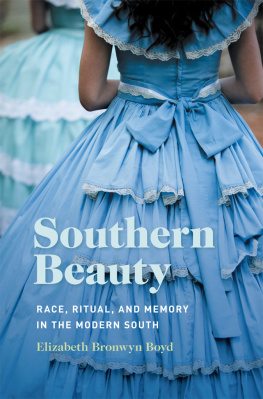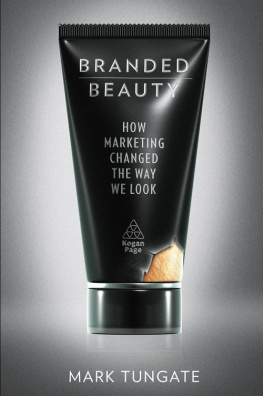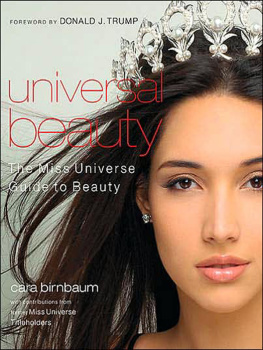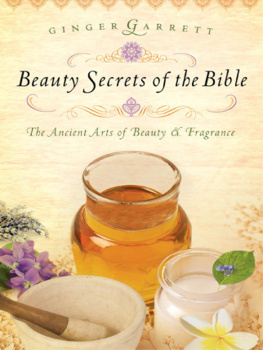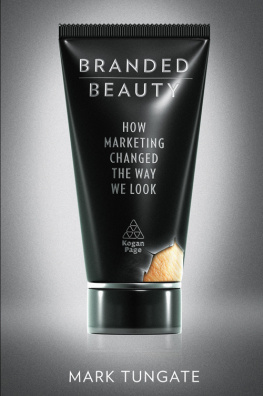Pageants, Parlors, and Pretty Women
This book was published with the assistance of the Z. Smith Reynolds Fund of the University of North Carolina Press.
2014 The University of North Carolina Press
All rights reserved. Manufactured in the United States of America.
Designed by Sally Scruggs. Set in Miller and Meta by Tseng Information Systems, Inc.
The paper in this book meets the guidelines for permanence and durability of the Committee on Production Guidelines for Book Longevity of the Council on Library Resources. The University of North Carolina Press has been a member of the Green Press Initiative since 2003.
Library of Congress Cataloging-in-Publication Data
Roberts, Blain.
Pageants, parlors, and pretty women : race and beauty in
the twentieth-century South / Blain Roberts.
pages cm
Includes bibliographical references and index.
ISBN 978-1-4696-1420-5 (cloth : alk. paper) ISBN 978-1-4696-1421-2 (ebook)
1. Civil rights movementsSouthern StatesHistory20th century. 2. Southern StatesRace relationsHistory20th century. 3. Race awarenessSouthern StatesHistory20th century. 4. African American womenSouthern StatesSocial conditions20th century. 5. Black raceColorSocial aspectsSouthern StatesHistory20th century. 6. Human skin colorPsychological aspectsSouthern StatesHistory20th century. 7. CosmeticsSocial aspectsSouthern StatesHistory20th century. 8. Beauty, PersonalSocial aspectsSouthern StatesHistory20th century. 9. Beauty shopsSocial aspectsSouthern StatesHistory20th century. 10. Beauty contestsSocial aspectsSouthern StatesHistory20th century. I. Title.
E185.615.R522 2014
323.119607300904dc23
2013035602
18 17 16 15 14 5 4 3 2 1
Contents
ONE. Making Up White Southern Womanhood
The Democratization of the Southern Lady
TWO. Shop Talk
Ritual and Space in the Southern Black Beauty Parlor
THREE. Homegrown Royalty
White Beauty Contests in the Rural South
FOUR. Thrones of Their Own
Body and Beauty Contests among Southern Black Women
FIVE. Bodies Politic
Beauty and Racial Crisis in the Civil Rights Era
Illustrations
Eliza Ripley, ca. 1854
Arkansas sharecropping woman, ca. 1935
University of Texas campus beauty, 1918
Rammer Jammer drawing, University of Alabama, 1925
Southern Flowers Face Powder advertisement, 1924
Nadinola Bleaching Cream advertisement, 1924
Slave woman braiding her mistresss hair, n.d.
Brass pressing comb, ca. early 1920s
Nannie Helen Burroughs, ca. 19001920
Madam C. J. Walker before and after advertisement, ca. 1906
Black Skin Remover advertisement, 1900
Fort Worth Cosmetology School, 1946
Black beauty shop in Memphis, ca. 1940s
United Daughters of the Confederacy monument dedication, Marietta, Georgia, 1908
Galveston International Pageant of Pulchritude, 1927
Louisiana State Fair Better Baby Contest, 1908
4-H health pageant winners, North Carolina, 1923
Wilson Tobacco Festival auction, North Carolina, n.d.
Wilson Tobacco Festival Queen contestant, North Carolina, ca. 1940
North Carolina tobacco queen pictured with the Union Jack, 1941
National Cotton Council pamphlet, 1940
Lumberton Tobacco Festival Queen, North Carolina, 1947
Home demonstration club meeting, North Carolina, ca. 1930s
Mamie Garvin Fields, 1913
Dancing at a juke joint in Memphis, Tennessee, 1939
Spelman Seminary High School graduates, 1887
Spelman College Senior Class, 1929
Bennett College May Day court, ca. 1930
Dillard University homecoming court, New Orleans, 1950
Anne Moody at a Jackson, Mississippi, sit-in, 1963
Homecoming celebration for Mary Ann Mobley, Jackson, Mississippi, 1959
Southern Methodist University sorority girls in blackface, 1956
Southern Methodist University sorority girls in antebellum dress, 1956
Bernice Robinson and Septima Clark at a citizenship school training workshop, ca. 1961
Vera Pigees beauty shop, Clarksdale, Mississippi, 1963
Miss Maroon and White court, Spelman College, 1970
Miss Maroon and White queen contestants, Spelman College, 1970
Gayle Ransom, University of South Carolina homecoming queen, 1973
Gayle Ransom being crowned as homecoming queen, 1973
Freedom trash can, Miss America Pageant protest, 1968
Miss America protester and ram, 1968
Saundra Williams, Miss Black America, 1968
Mary Kay Ash with pink Cadillac, 1978
Acknowledgments
It is with great pleasure, and relief, that I am finally able to acknowledge the many people who have made this book possible. The seeds of this project were planted years ago, in an undergraduate senior thesis. Very little of that thesis remains in these pages, but Nell Painter, my adviser at Princeton, showed me what historians do. When she asked where my sources were, and when I responded that they were in faraway places like Atlanta and Charleston, she said, Well, get yourself down there! And I did, taking a road trip over fall break to comb through dusty boxes in southern archives. That experience helped me see history as a process of discovery. My first debt is to her.
On that adventure, as well as on subsequent research trips I took as a graduate student and faculty member, an army of knowledgeable archivists connected me with traces of the story I wanted to tell. I would like to thank archivists at the Robert W. Woodruff Library at the Atlanta University Center; the Auburn Avenue Research Library; the Dolph Briscoe Center for American History at the University of Texas at Austin; the Southern Historical Collection and the North Carolina Collection at the University of North Carolina at Chapel Hill; the Avery Research Center for African American History and Culture at the College of Charleston; the South Carolina Historical Society; the DeGolyer Library at Southern Methodist University; the Rare Books, Manuscripts, and Special Collections Library at Duke University; the Indiana Historical Society; the State Historical Society of Wisconsin; the Amistad Research Center at Tulane University; the Will W. Alexander Library at Dillard University; the Department of Archives and Special Collections at the University of Mississippi; the State Archives of North Carolina; the D. H. Hill Library at North Carolina State University; the W. S. Hoole Special Collections Library at the University of Alabama; and the William H. Sheppard Library at Stillman College.
I have benefited from the kindness of many institutions whose financial support helped me finish the manuscript. Two Mowry Research Grants from the University of North Carolina History Department, a Summer Research Grant from the Center for the Study of the American South, and a Newcomb College Travel Grant made possible early research trips. A University-Wide Dissertation Research Fellowship provided funding for a semester of research travel during which I drove from North Carolina to Texas and back again. A Royster Society of Fellows University-Wide Dissertation Completion Fellowship, awarded by the graduate school and the Center for the Study of the American South, gave me the freedom to write for an entire year, free of teaching responsibilities. The Citadel, where I took my first job, has an impressive research program for faculty members funded by the generosity of its alumni. In my two years there, The Citadel Foundation provided three grants that allowed me to work on the manuscript. At California State University, Fresno, Dean Luz Gonzalez and the College of Social Sciences have been especially supportive, awarding two course releases that gave me time to revise the manuscript. Two research grants from Provost William Covino, one given in conjunction with the College of Social Sciences, defrayed the costs associated with acquiring illustrations.
Next page



